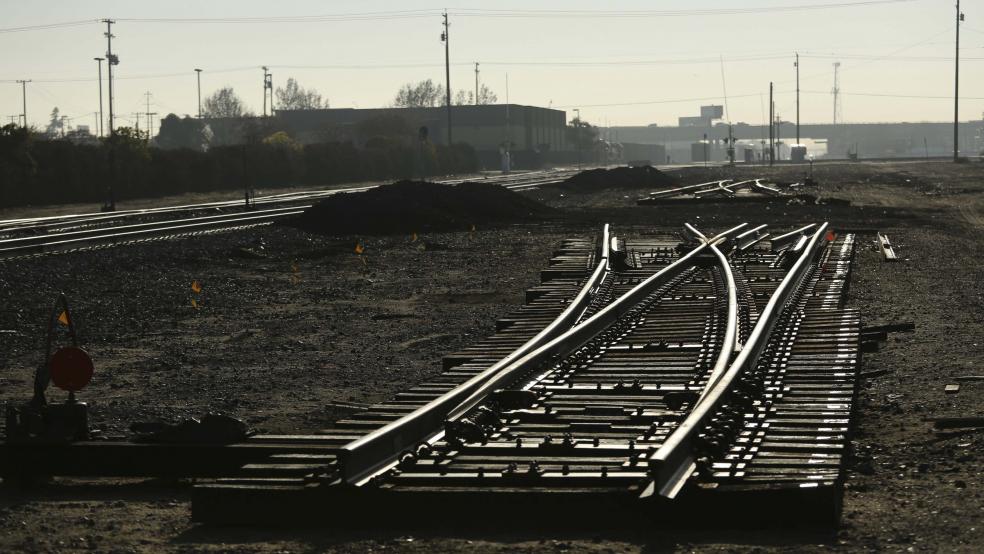FRESNO (Reuters) - California's business leaders on Tuesday ceremoniously broke ground on the country's largest and most ambitious plan for high-speed rail that would eventually transport passengers between Los Angeles and San Francisco in less than three hours.
The architect of California's plan, Governor Jerry Brown, brushed off a few dozen naysayers who protested nearby, saying other great infrastructure feats faced skepticism when originally proposed.
"Everything big runs in opposition," said Brown, a Democrat who cited the Golden Gate Bridge and Bay Area Rapid Transit as projects once attacked or called a boondoggle.
"This is important," Brown insisted, at the groundbreaking in Fresno.
The San Francisco to Los Angeles route is not expected to be completed until 2029. That trip by car typically takes around six hours but rail will cut travel time in half. Later extensions of the route would add Sacramento and San Diego, connecting 800 miles.
The United States lags behind Europe and Asia in constructing high-speed rail. California's project is one of only a few planned, although it has been mired in environmental lawsuits and eminent domain land disputes.
Construction began last year near Fresno in the Central Valley, a region home to 20 percent of Californians, because of access to federal funds and the ability to advance the project faster at a lower cost. Fresno is an area of high unemployment.
Across the street from the groundbreaking at the site of a demolished Del Monte plant, Paul Katchadourian of Katch Environmental said high-speed rail had already enabled his construction engineering firm to hire over a dozen new employees.
"This area where we're standing, it was ... not the nicest side of town. This construction is bringing Fresno to a whole new level," said Katchadourian. "This is something that rarely happens to Fresno, usually federal dollars goes to other parts of the state."
In 2008, Californian voters approved nearly $10 billion of bonds to kickstart the project, estimated to eventually cost $68 billion. The federal government contributed another $3.3 billion. Next, the state will look to private partnerships.
During Brown's record fourth inauguration on Monday, the governor outlined an aggressive plan to reduce California drivers' petroleum use by up to 50 percent over 15 years.
U.S. EPA Administrator Gina McCarthy on Tuesday said high-speed rail would help Californians meet that goal. "Few cars, few planes, cleaner trains means cleaner air," she said.
(Reporting by Robin Respaut in Fresno; Editing by Diane Craft)




